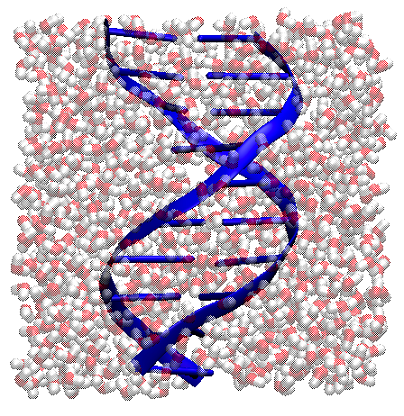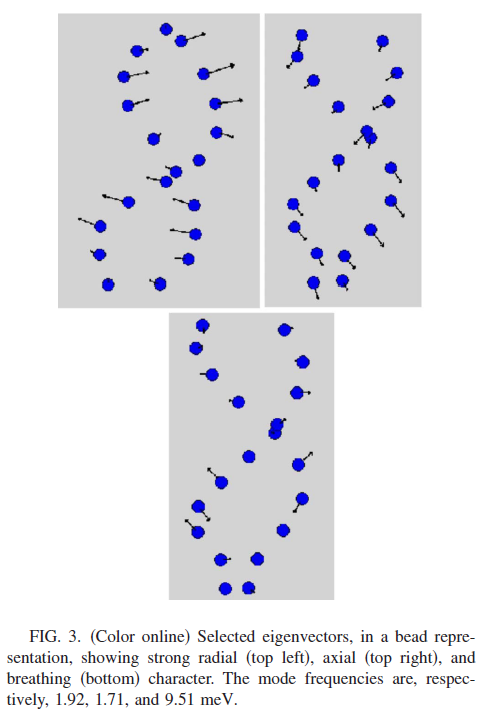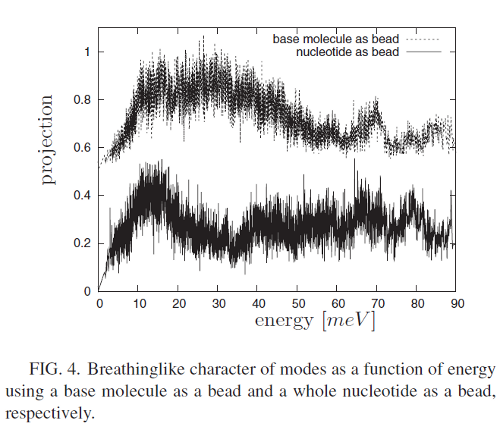Accueil du site > Plate-Forme PFTC > Fabien Fontaine-Vive > Research
Research
- Summary
- Network in proteins
- Inhibition mechanism of antiviral drugs
- DNA vibration and base-pair opening
- Catalysis and thin films
DNA vibration and base-pair opening
Collaborations
Pr. Mark Johnson, Institute Laue-Langevin, Grenoble
Dr. Lambert Van Eijck, Delft University of Technology, the Netherlands
Dr. Franci Merzel, National Institute of Chemistry, Ljubjana, Slovenia
Pr. Allan Rupprecht, University of Stockholm, Sweden
A fully atomistic model of B-DNA using the CHARMM force field is presented. The Hessian of interatomic forces obtained from CHARMM for the equilibrium structure was used as input to a large scale phonon calculation. The calculated dispersion relations at low frequency are compared with recently published experimental data, which shows the model to have good accuracy for the low frequency, vibrational modes of DNA. These are discussed in the context of base-pair opening. In addition to the widely reported modes at, or below, approximately 12.5 meV, a continuous band of modes with strong base-pair opening character is found up to 40 meV, which coincides with the typical denaturation temperature of DNA.
- Phys. Rev. E, 2007, vol.76, 031917, ‘Atomistic model of DNA : Phonons and base-pair opening’
- Comp. Phys. Comm., 2007, vol.177, p.530-538, ‘NMscatt : a program for calculating inelastic scattering from large biomolecular systems using classical force-field simulations’






